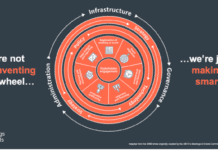 The first part of this two-part series discussed how meeting planners can centralize data before, during and after an event. This second part addresses how to turn big data into actionable insights for future events as well as enhance operations and communication throughout the event cycle.
The first part of this two-part series discussed how meeting planners can centralize data before, during and after an event. This second part addresses how to turn big data into actionable insights for future events as well as enhance operations and communication throughout the event cycle.
Turn Your Event Intelligence into Actionable Insights
There are many areas where the data collected can be turned into insights, from corporate travel to events and meetings management.
With regard to corporate travel, there are many different analyses that can be implemented to derive insights for improved performance and compliance. At a high level, the success of the program can be measured by estimating the savings it generates. That assessment can be made by comparing the difference between the negotiated corporate rates with the actual rate employees booked their hotels or airline tickets. The same data can be used to measure the efficiency of travel sourcing by tracking how many times the private corporate rate was lower than the published rate and by how much. You can also analyze your base of employee travelers to better understand their needs and preferences, while tracking their travel-policy compliance. Such insights are usually very helpful to push relevant travel policy changes that bolster compliance and lead to more corporate travel savings.
With regard to events and meetings management, there’s also a great deal of insight that can be generated to make better sourcing decisions as well as improve attendee and sponsor engagement. Just from the event history, you can identify which events are in decline based on revenue and attendee interest/satisfaction to decide whether to cancel or retool. Using the attendee data, you can segment your audience based on the line of business, interests, preferences, behavior, buying intent and revenue potential to personalize your events. Once you know your attendee profile, you can determine the appropriate size of the event, choose the right location, find relevant keynote speakers and bring in exhibitors whose products line up with the attendees’ buying intent.
One of the growing trends for most enterprises is having the ability to track their meeting spend down to the penny. Historically, most companies only tracked their larger group events, but now for both compliance and budgeting purposes, they are attempting to track even smaller ad hoc events. Today verses just 10 years ago, smaller events comprise a significant percentage of the total spend.
Streamline Operations & Communicate Throughout the Event Cycle
One of the often overlooked benefits of centralized data is that it can be leveraged to enable one-to-one communications. Within the context of events and meetings management, it not only creates efficiencies with regard to the streamlining of the event logistics (coordination of vendors, automation of administrative tasks), but it also drives higher attendee engagement and satisfaction.
Before the event, you can automate a complex sequence of attendee and sponsor communications, ranging from the announcement of the conference and early bird registration, to the RSVP of break-out sessions and payment reminders. During the conference, it can be used to send communications to coordinate vendors as well as send recommendations, session and meeting reminders, sessions surveys and changes within the conference program. After the conference, you can send another series of communications starting with a ‘thank you for attending’ email, a post-event survey and recap of the conference with highlights and video content. You can also use this opportunity to announce upcoming events that match the attendee’s interests.
One of the takeaways from the current evolution of Strategic Meetings Management technology is that it has evolved beyond the complex management of enterprise-wide meeting related processes, spend, volumes, policies. While it has done a lot to replace Excel spreadsheets, conference binders and to enforce meetings and travel policy compliance, SMM technology is now entering into new territory by offering the tools that enable the personalization and curation of the attendee experience. As a result, it allows strategic planners to organize conferences that yield higher customer and/or attendee engagement and satisfaction, which in effect leads to loyalty and profitable revenue growth.
Christophe has more than 15 years of experience in the travel industry, and is a travel and marketing technology advocate. He joined Cendyn/ONE in 2015 to share his knowledge of how Cendyn/One’s fully- integrated Hotel CRM + Digital Marketing Platform increases guest satisfaction.










